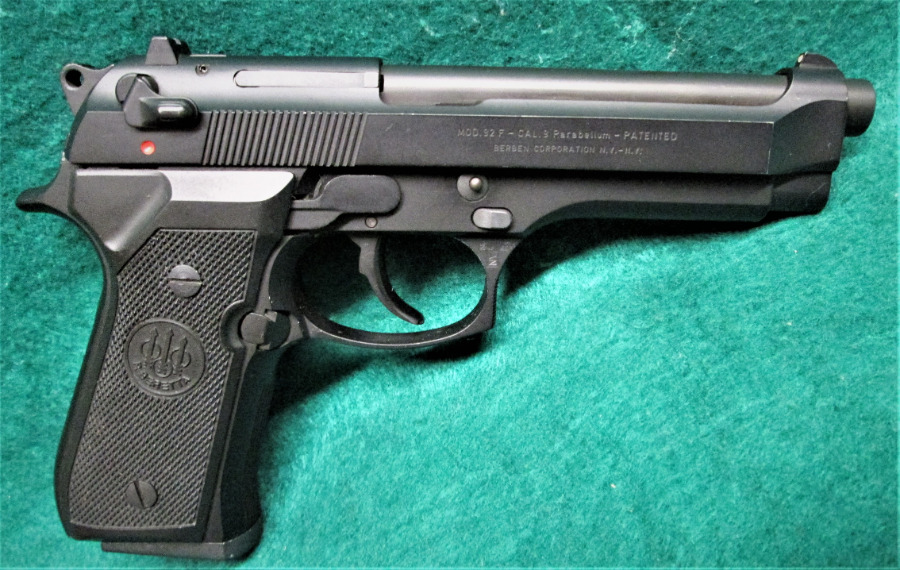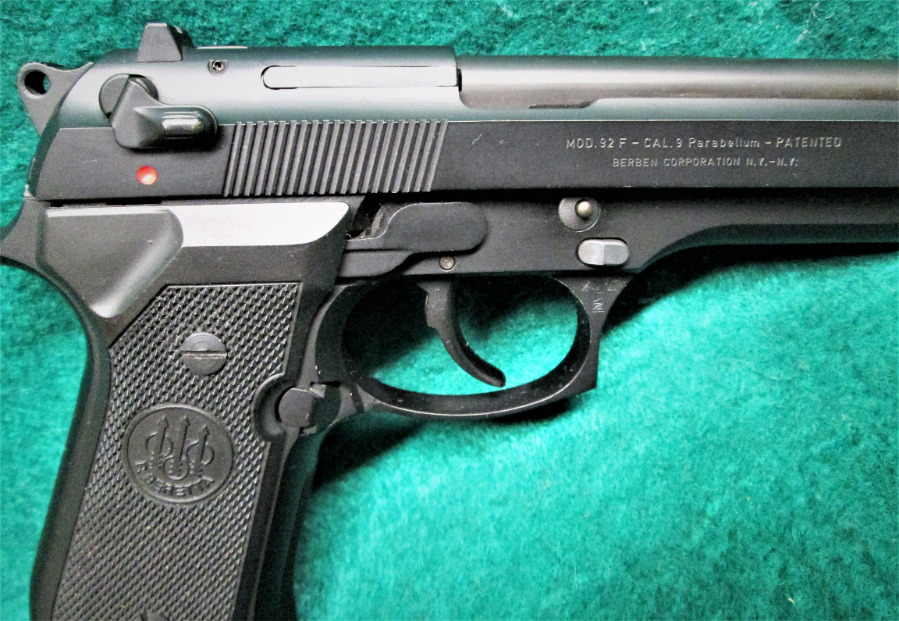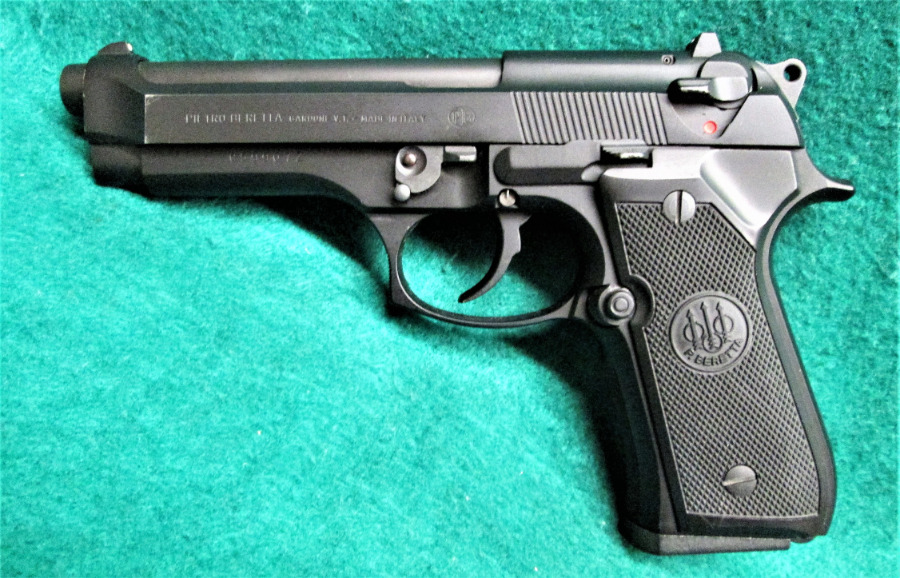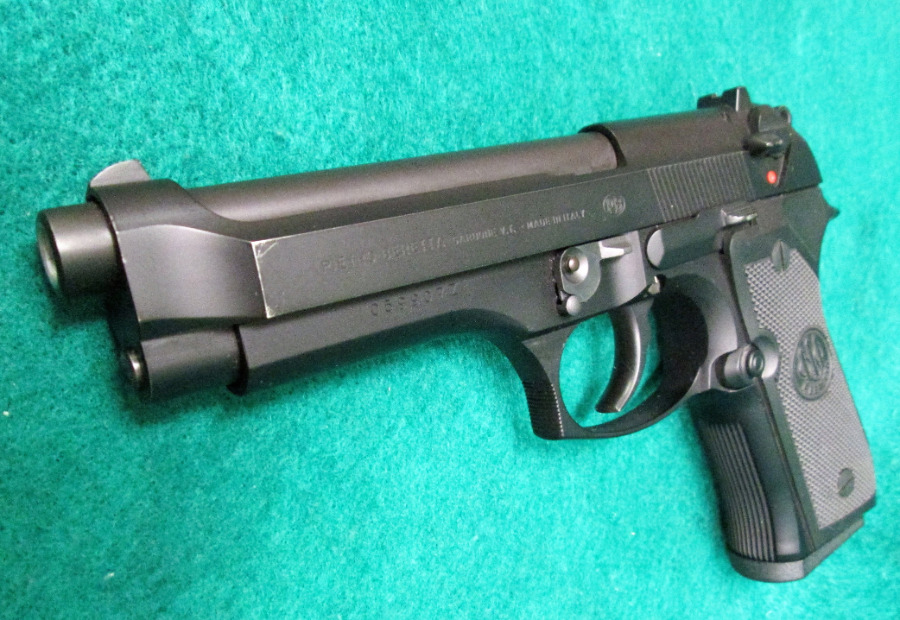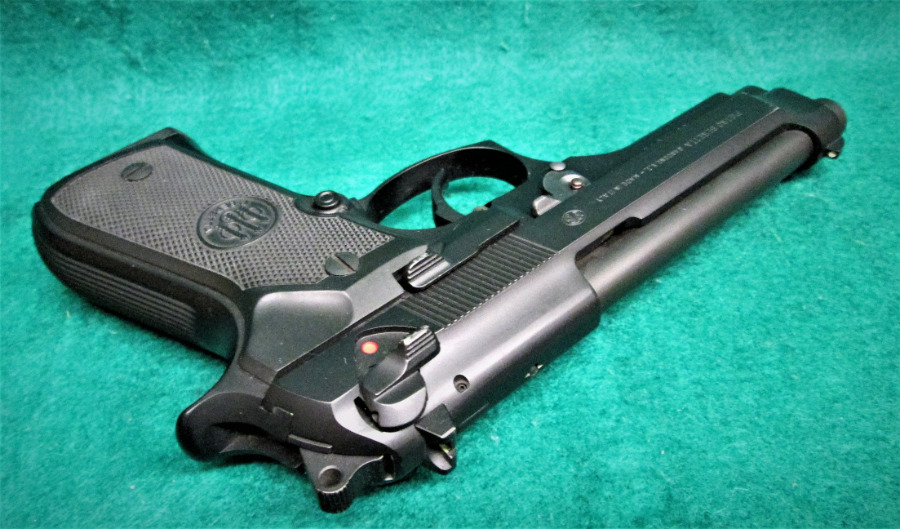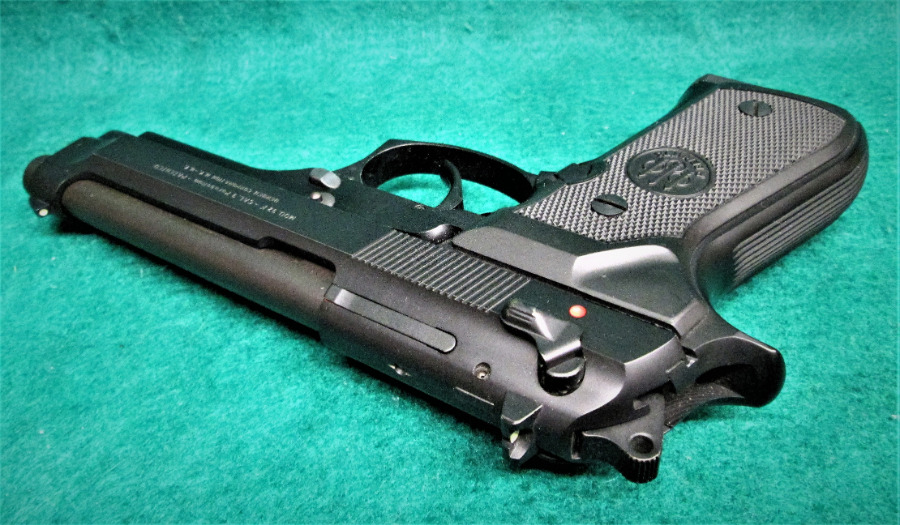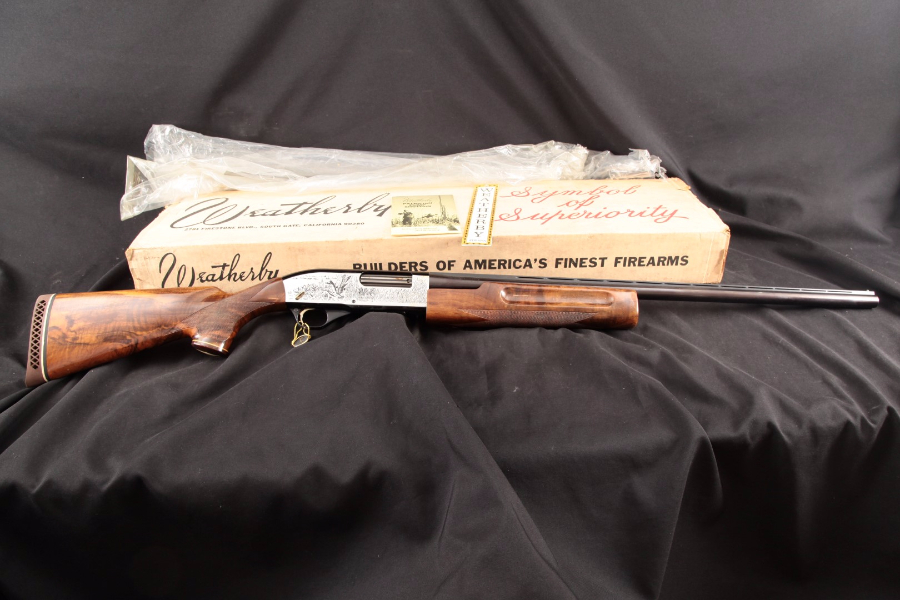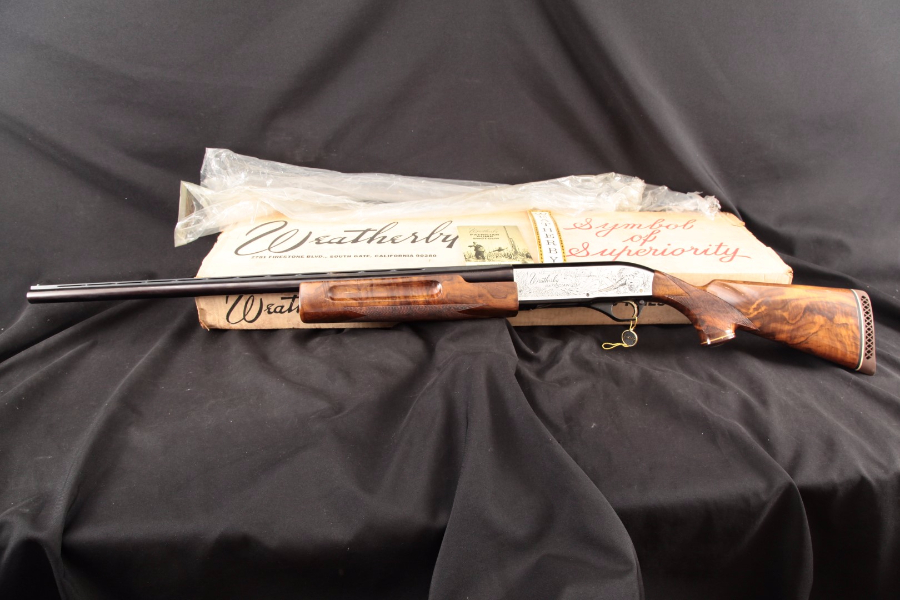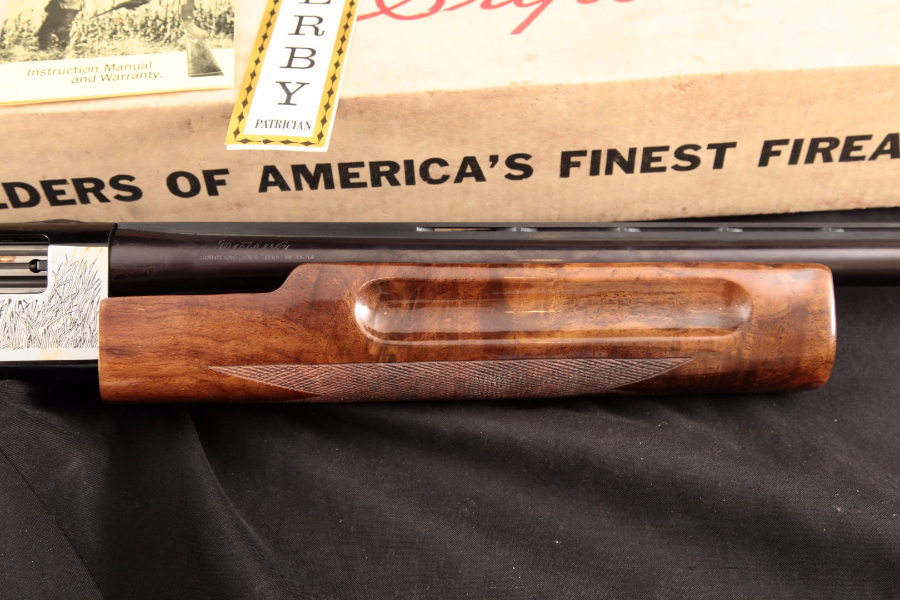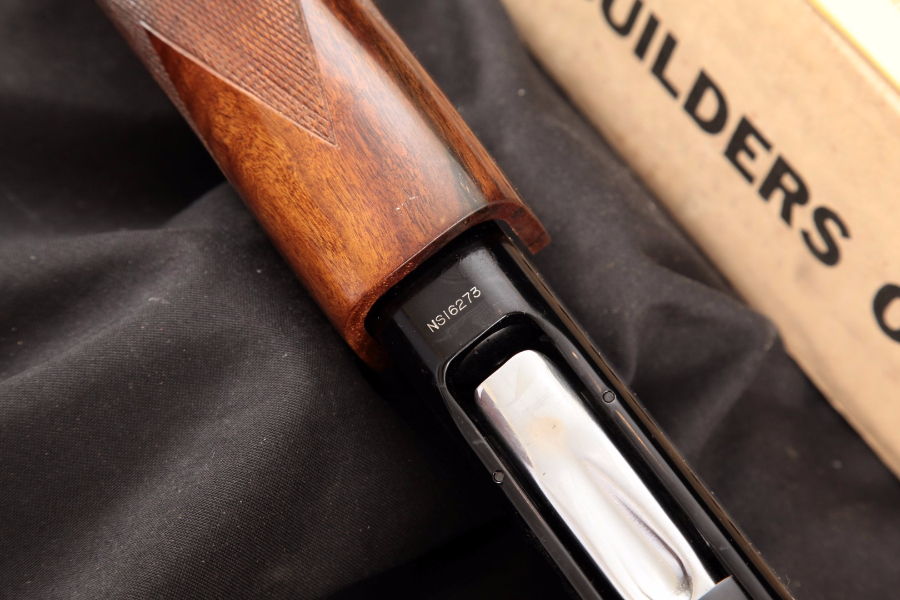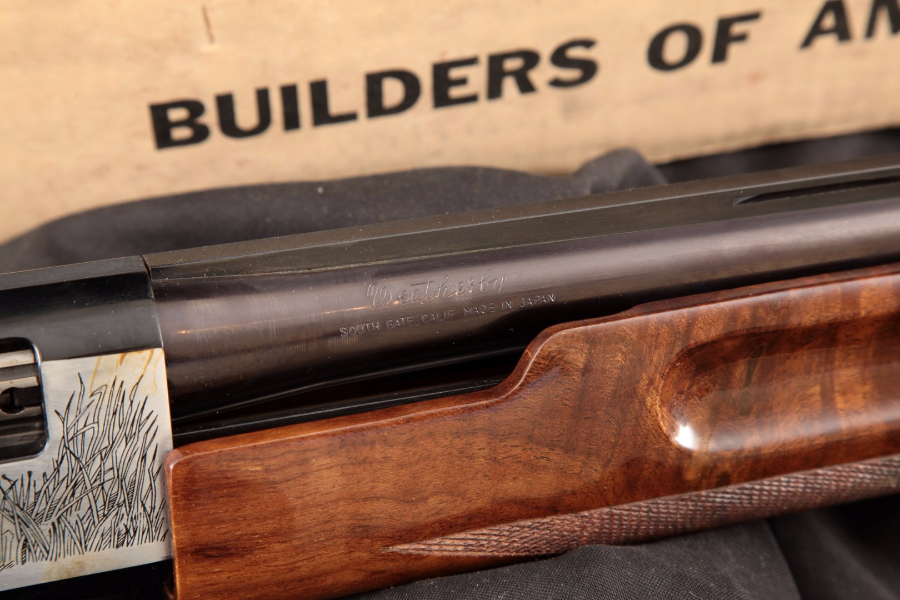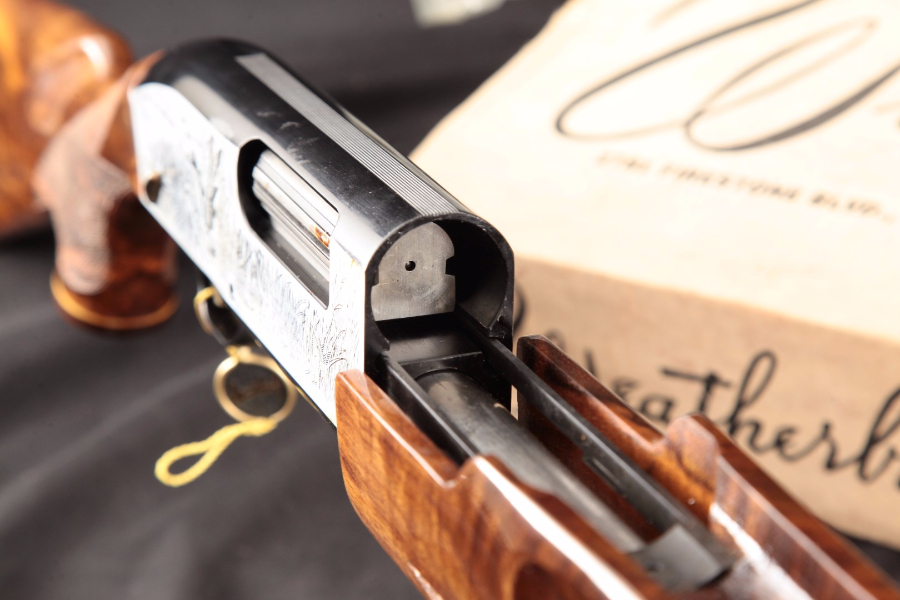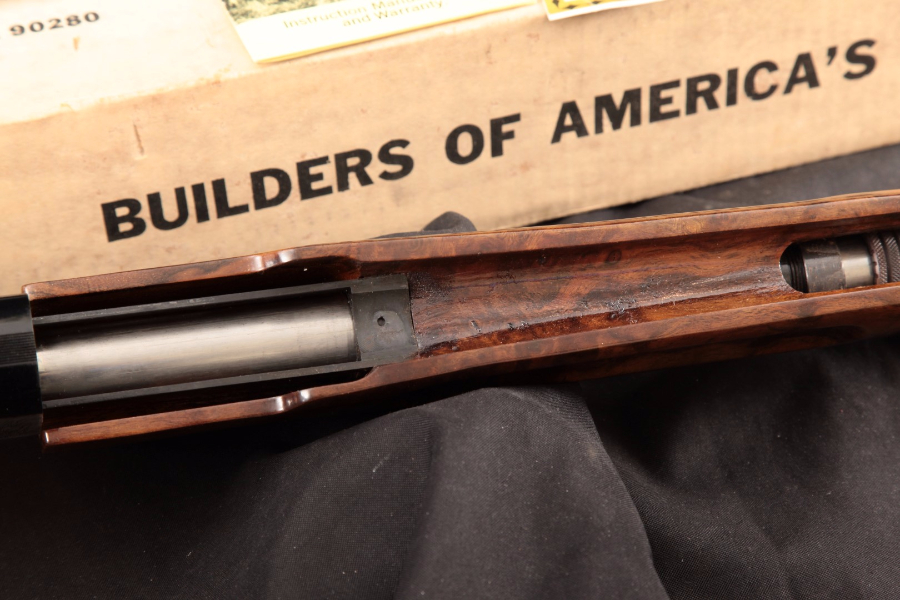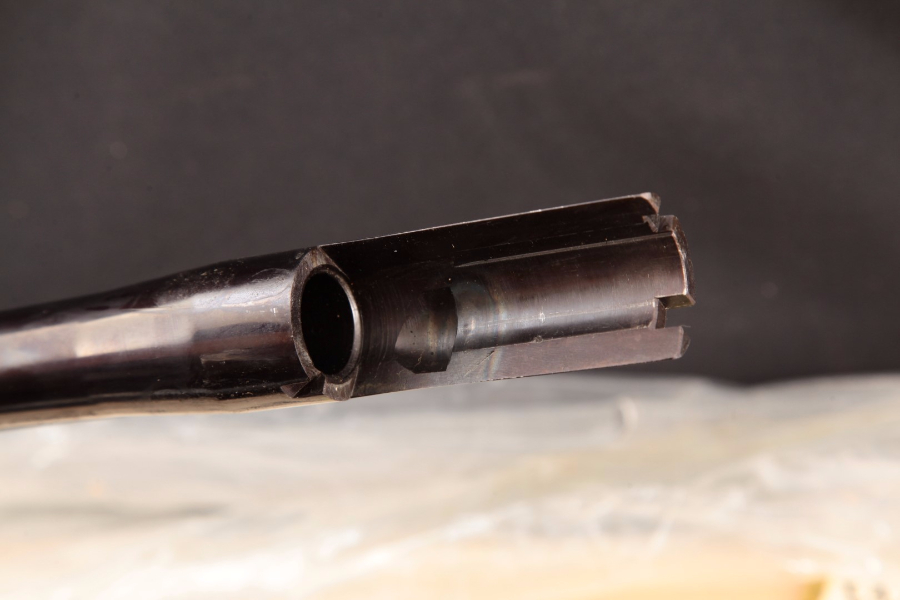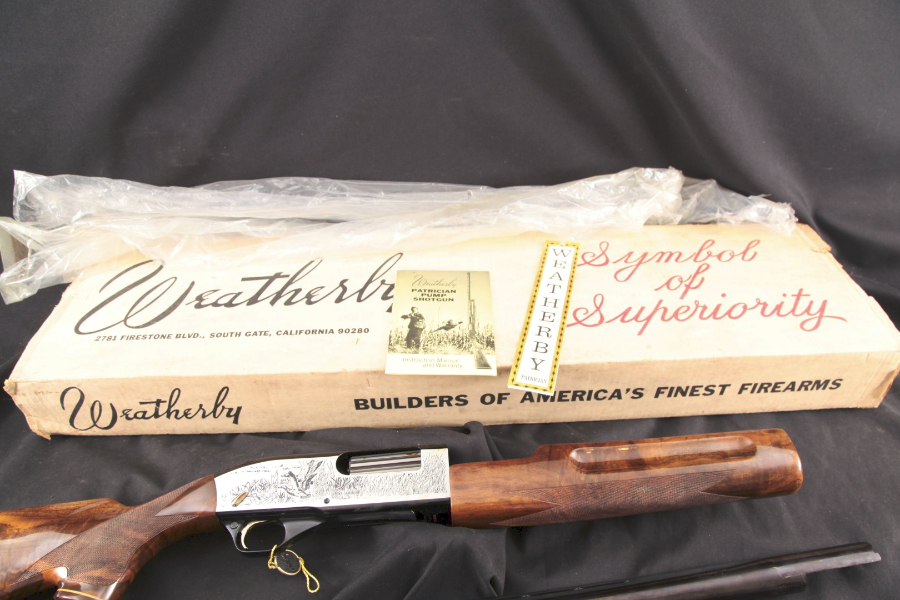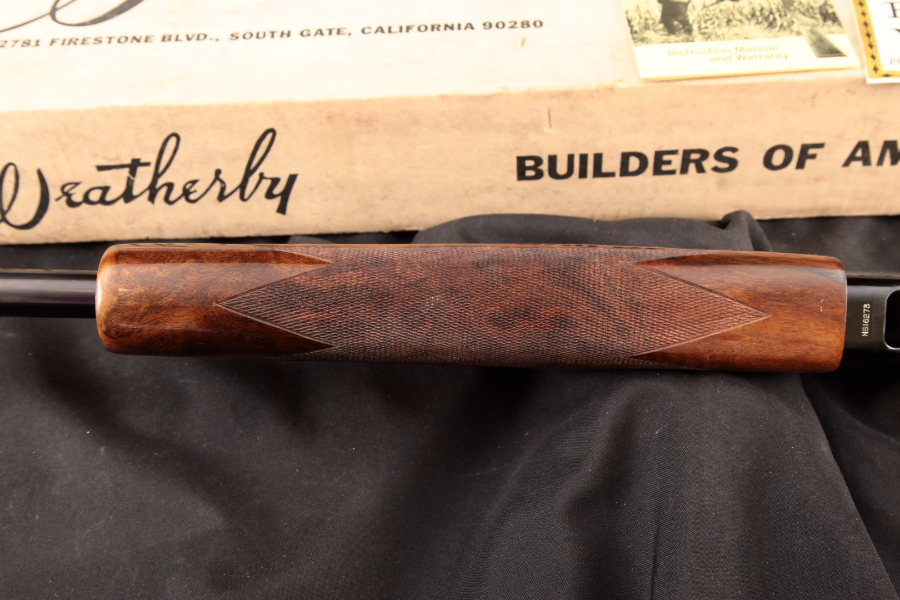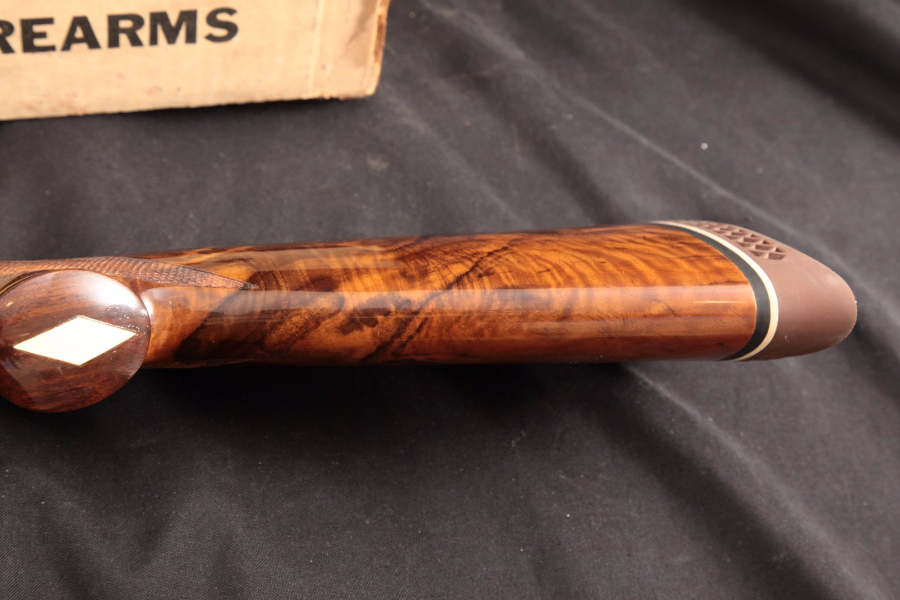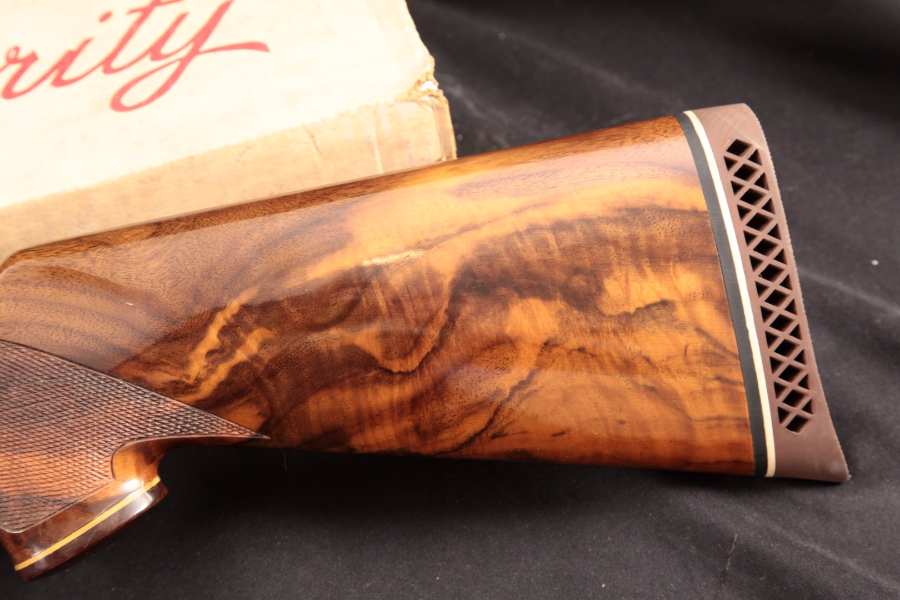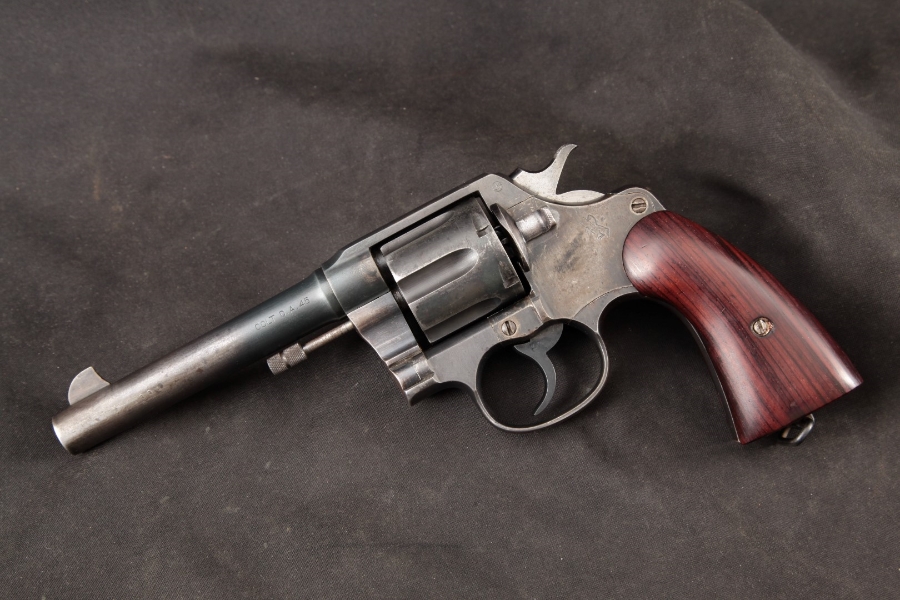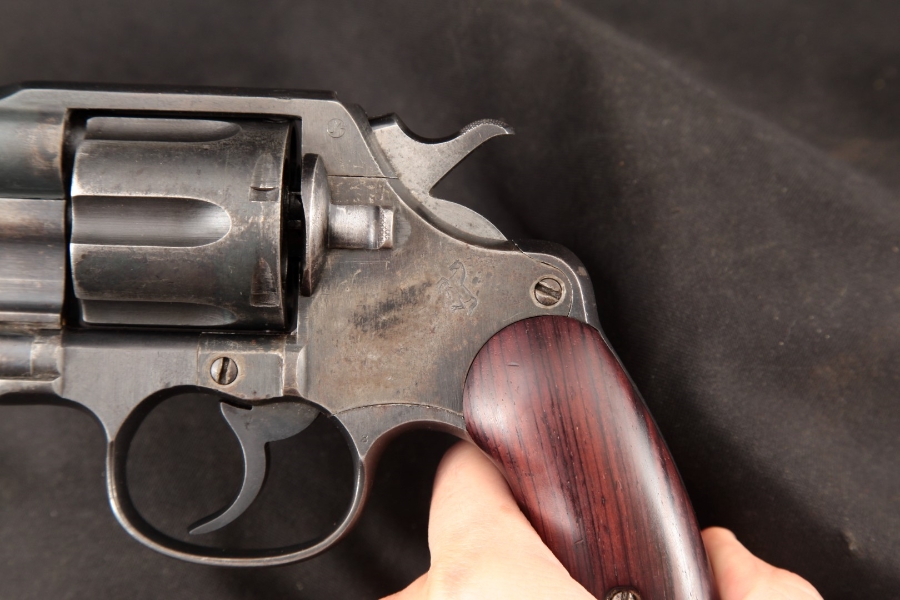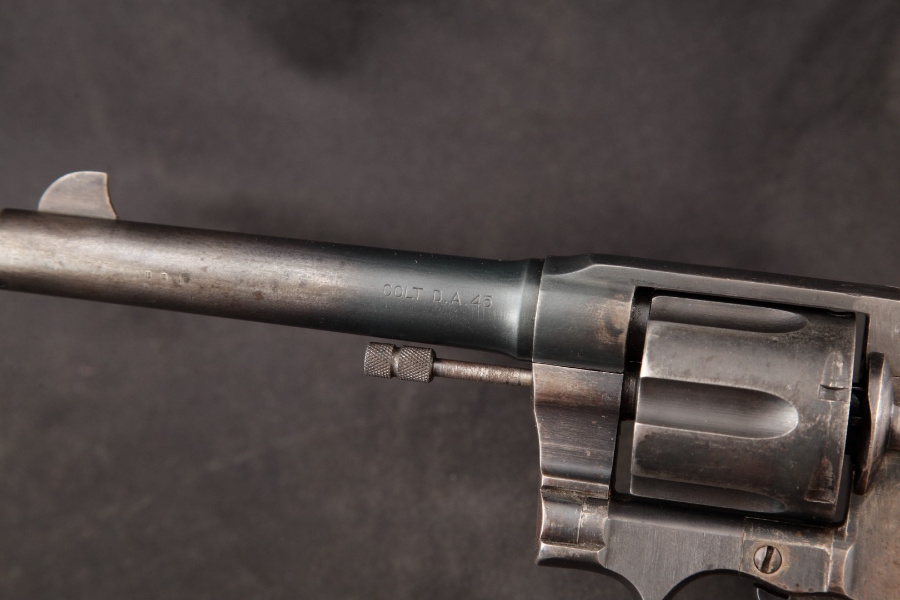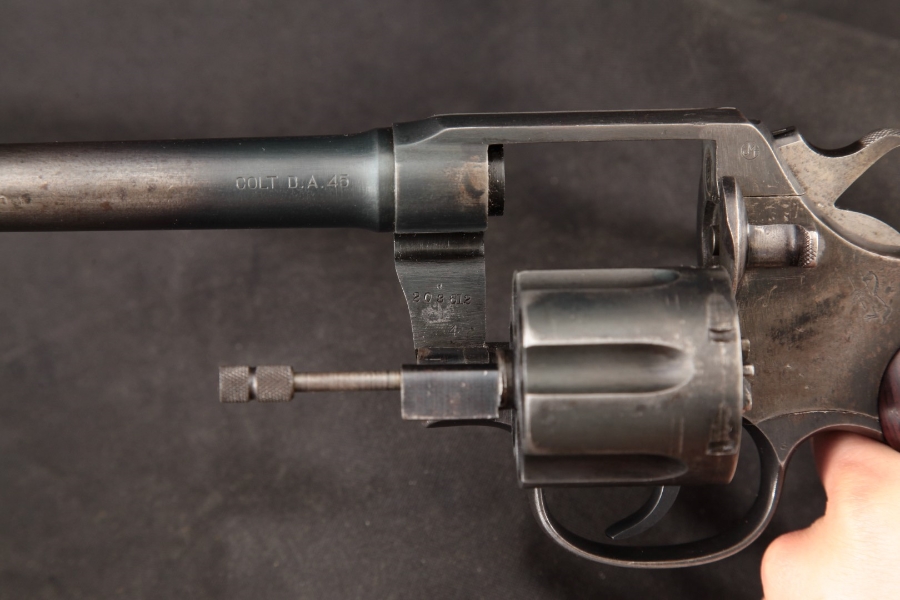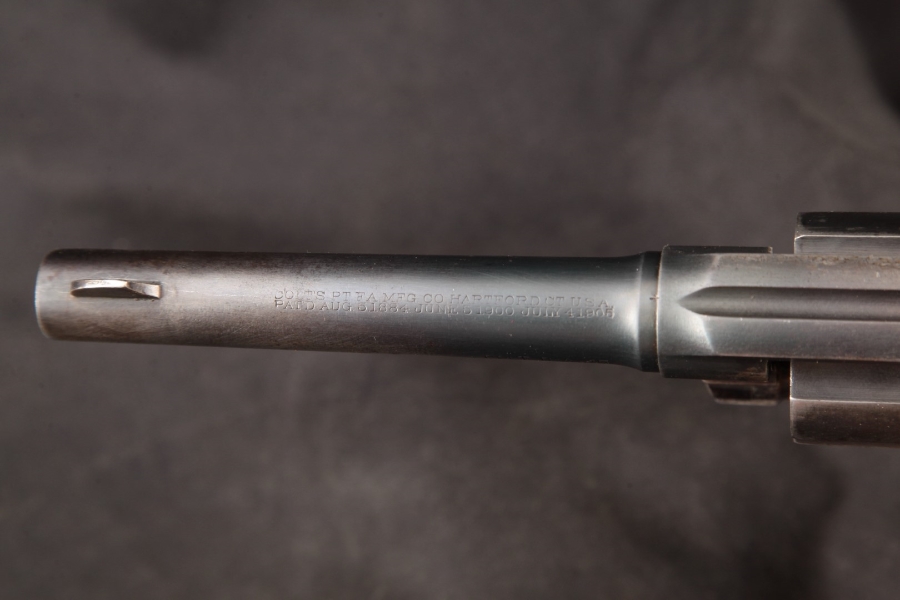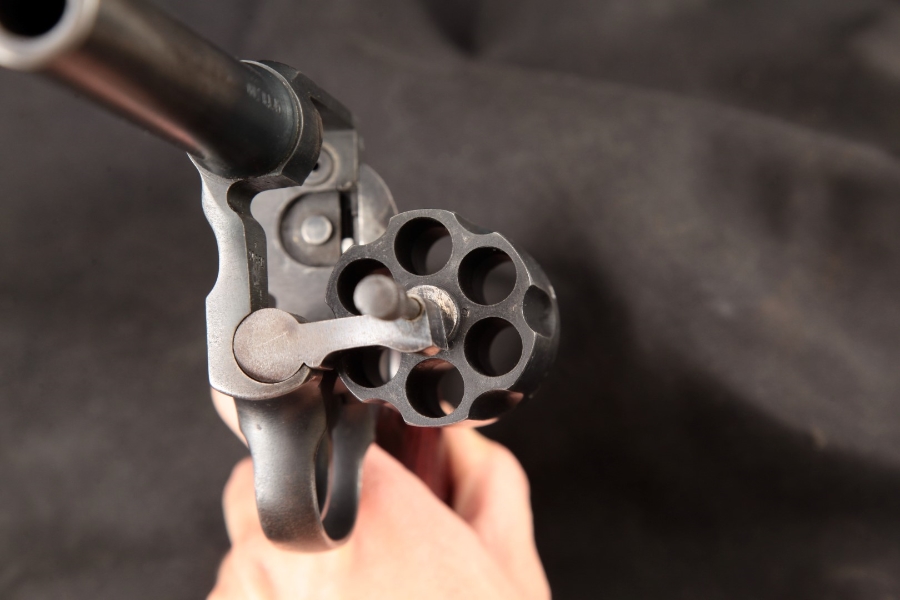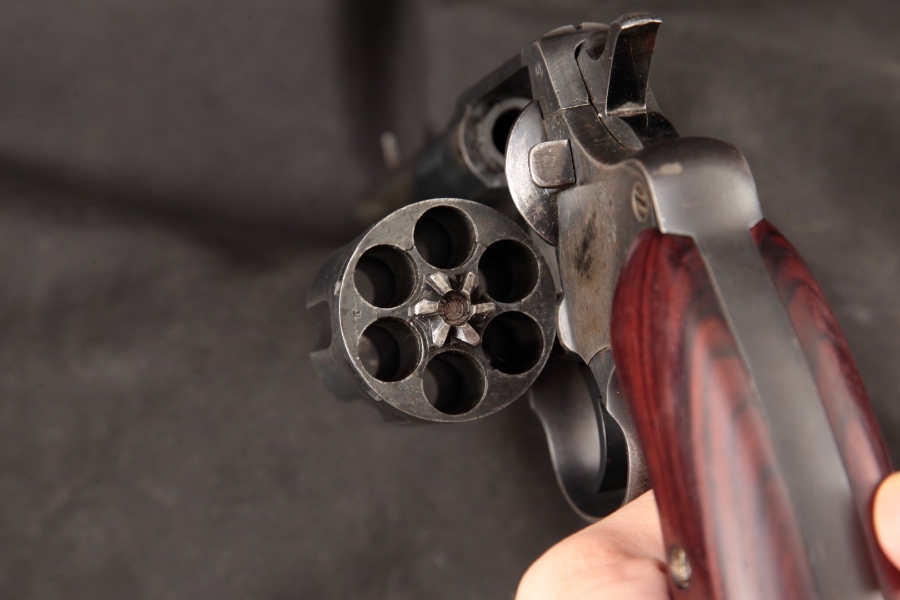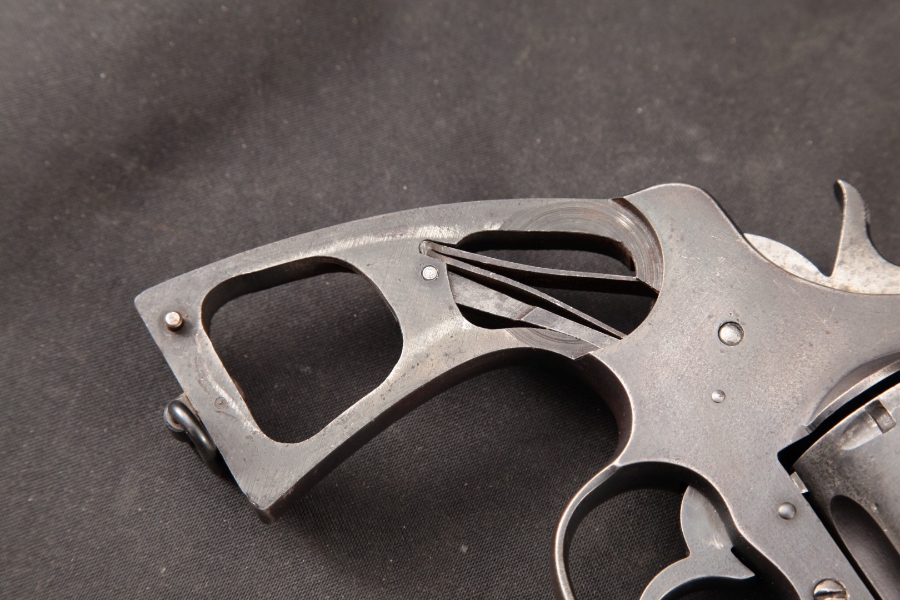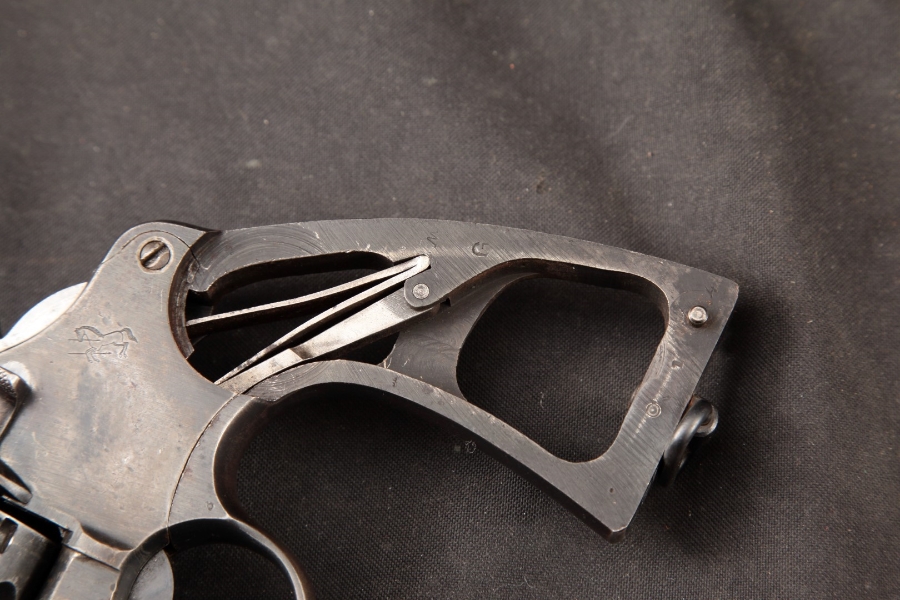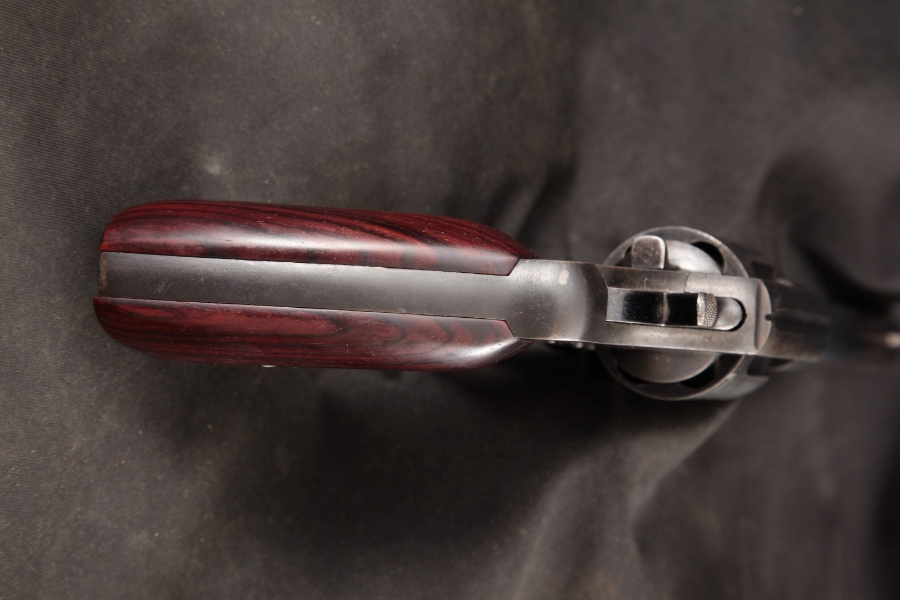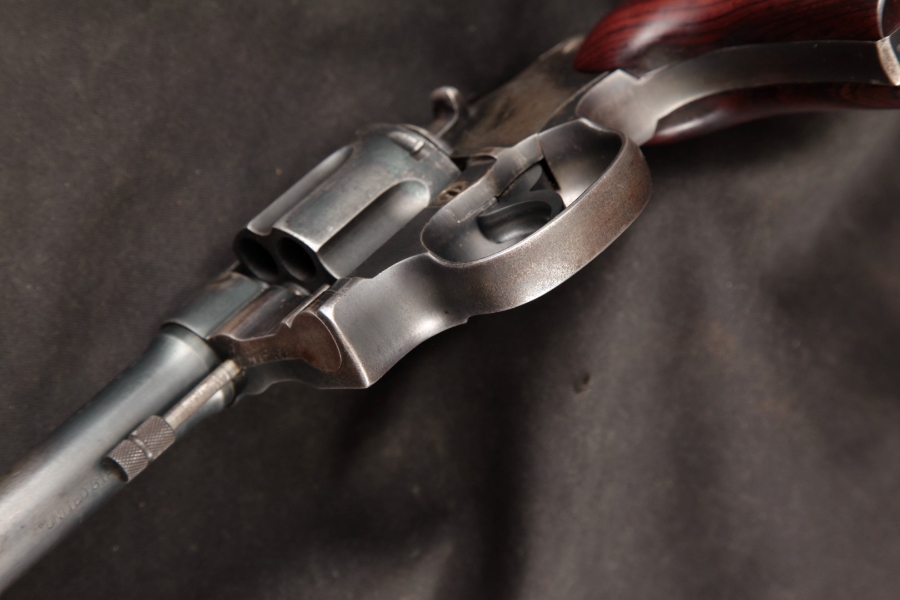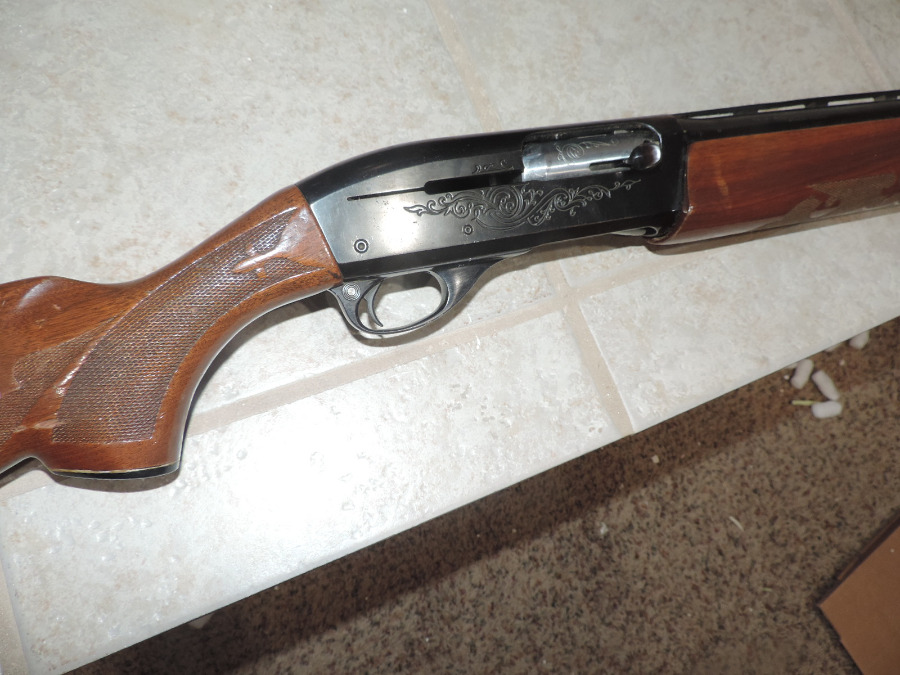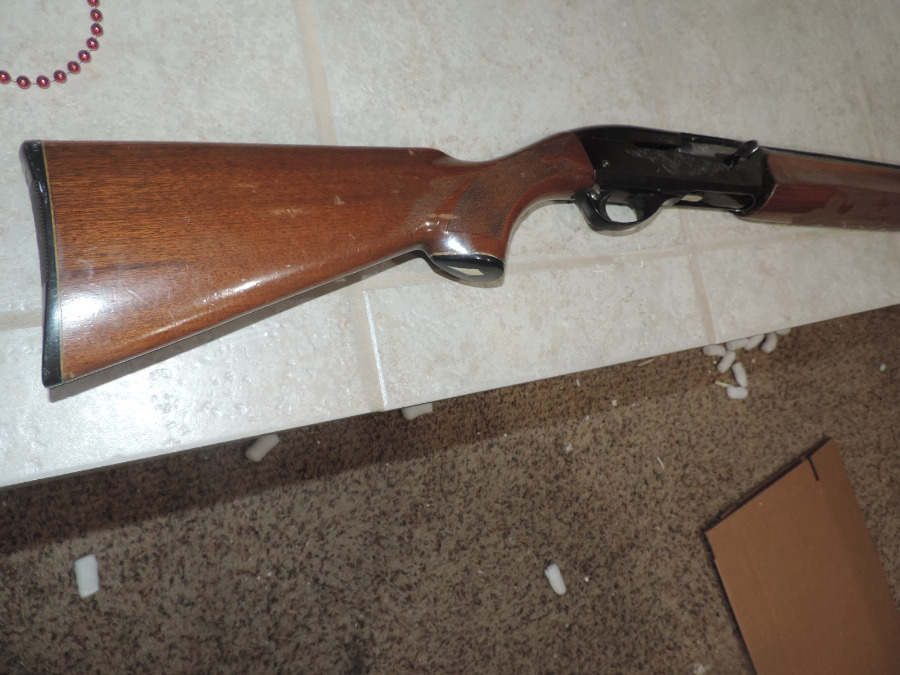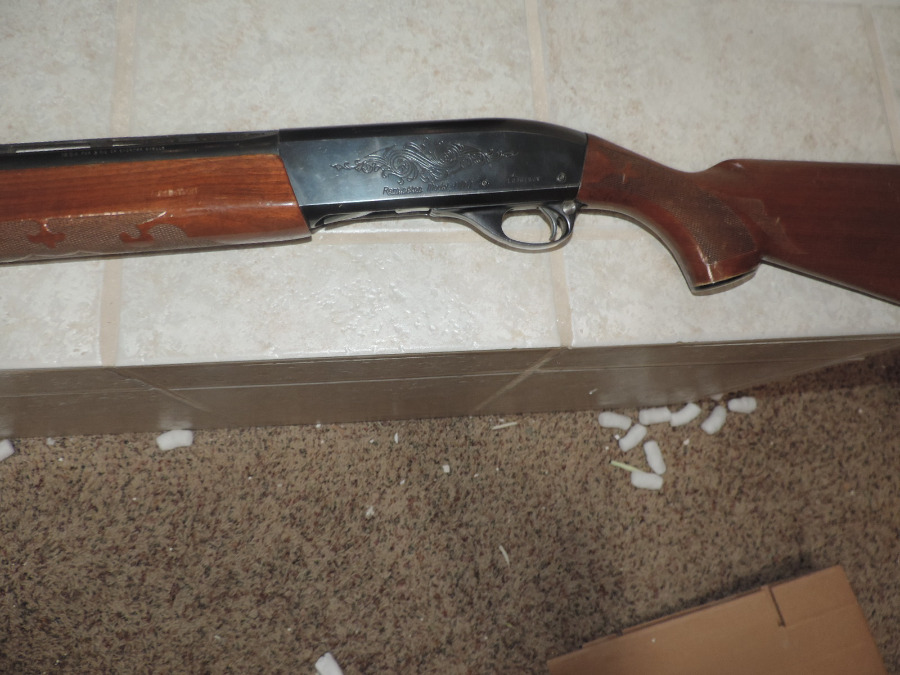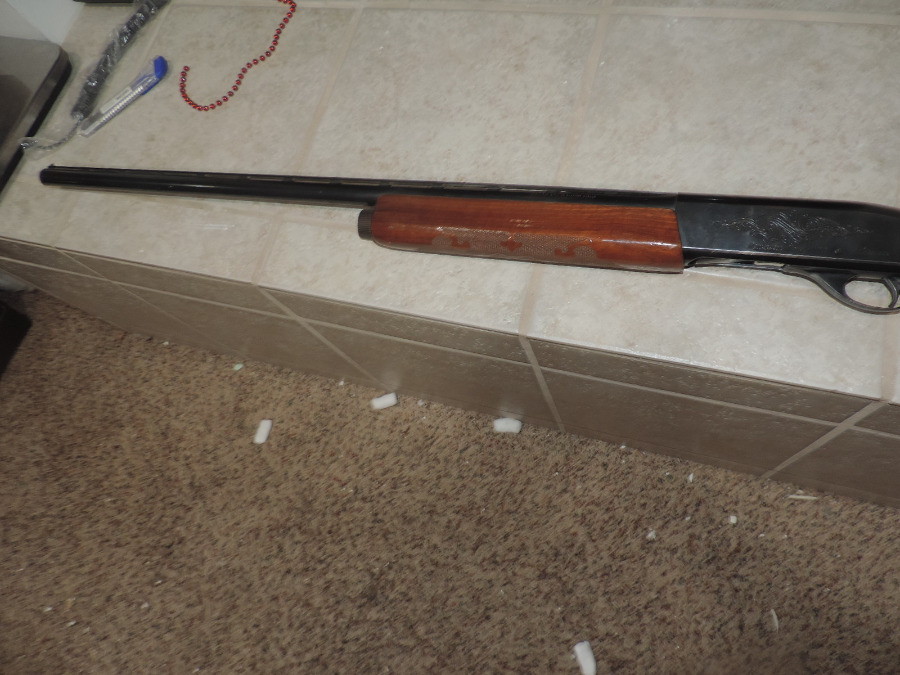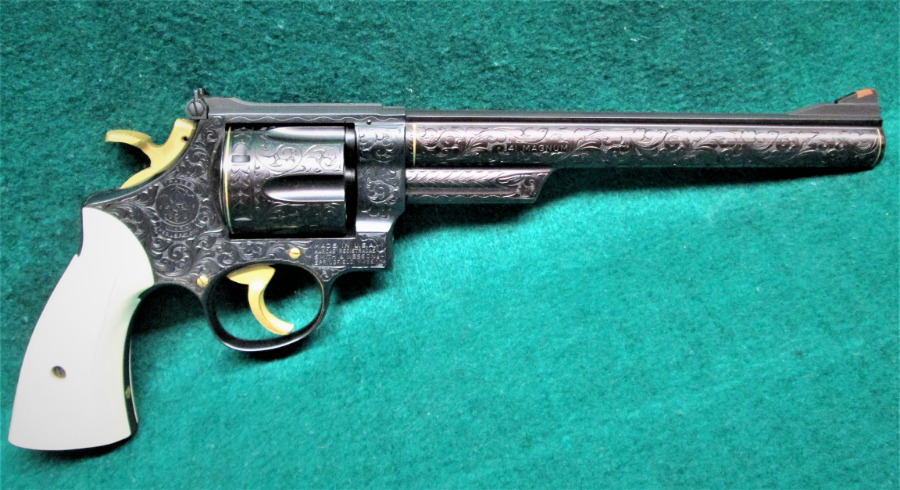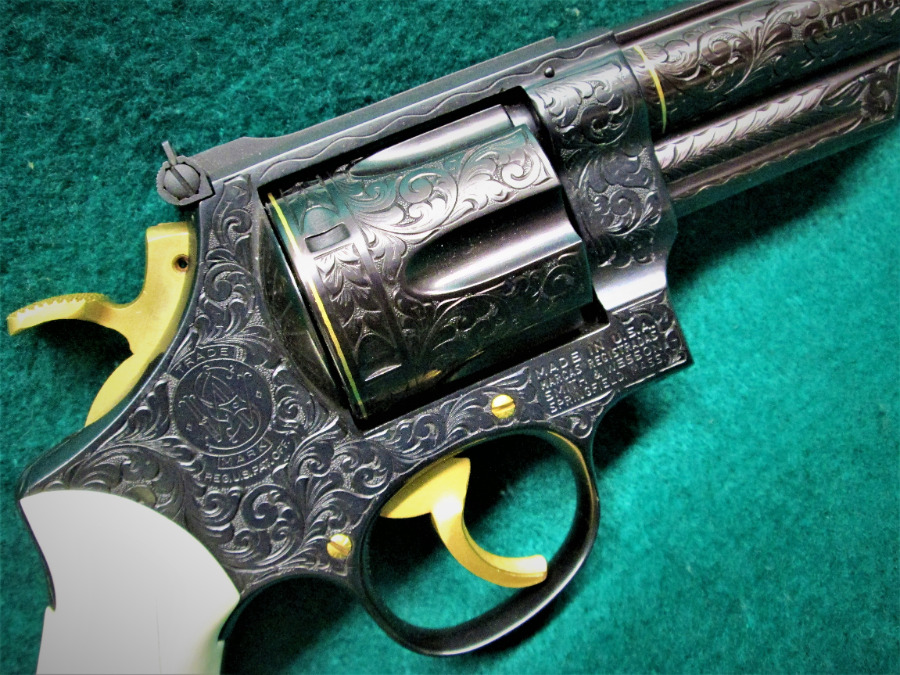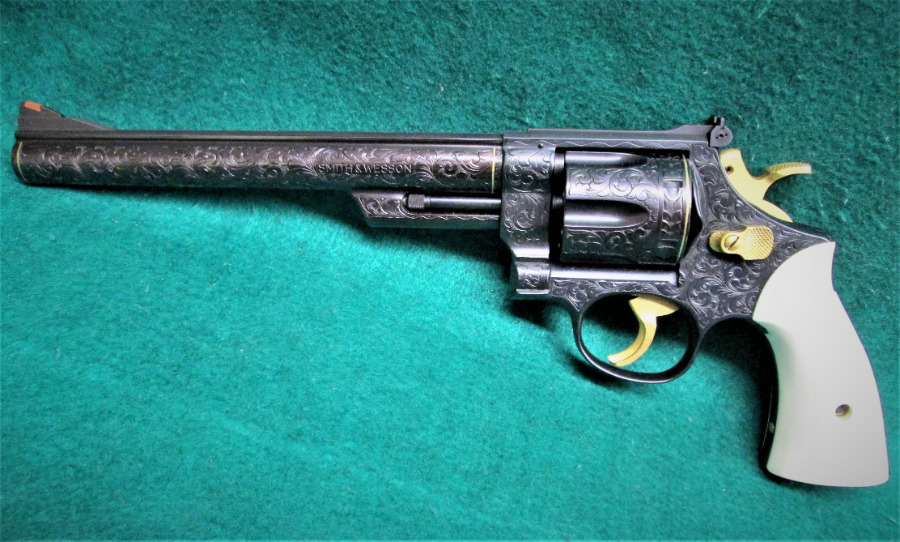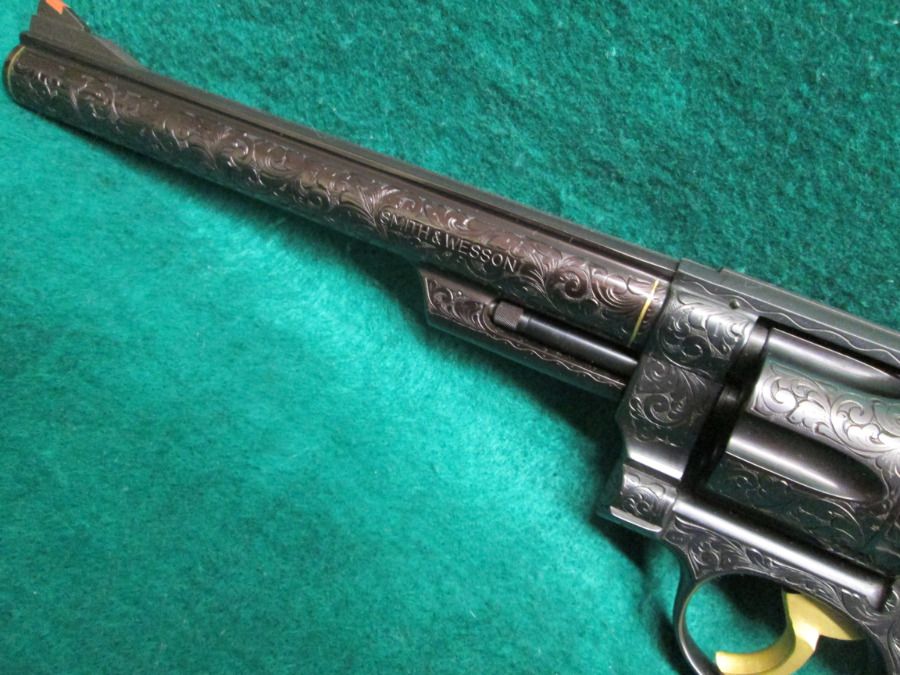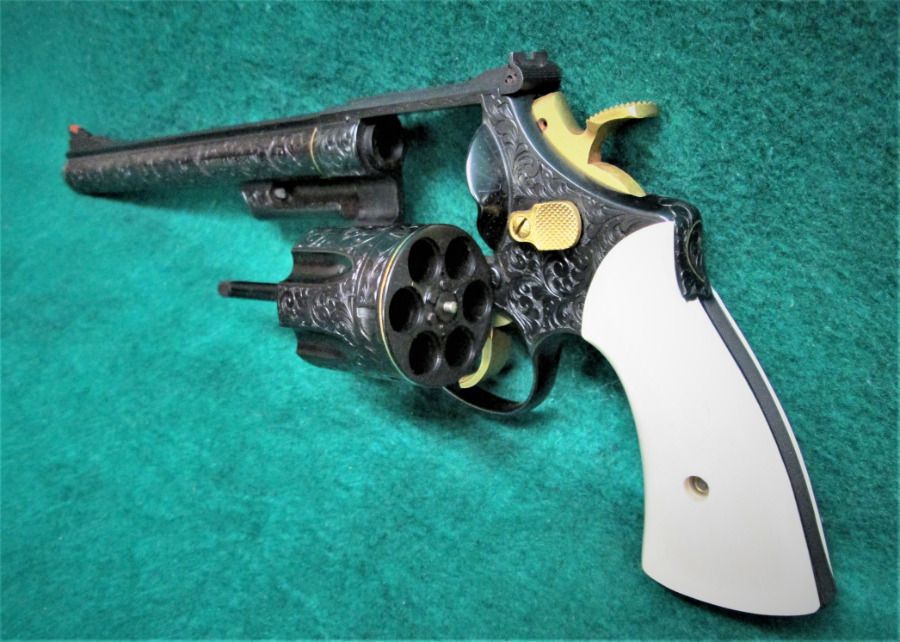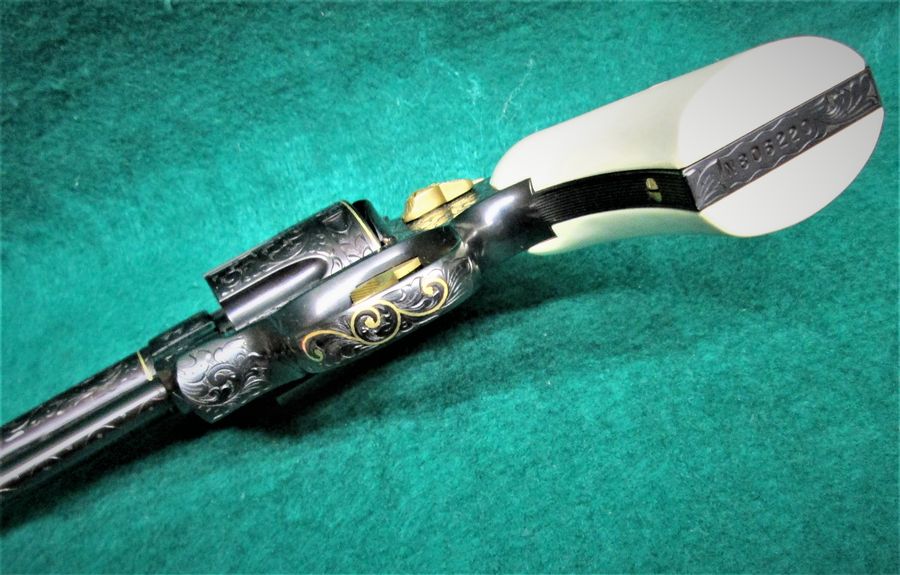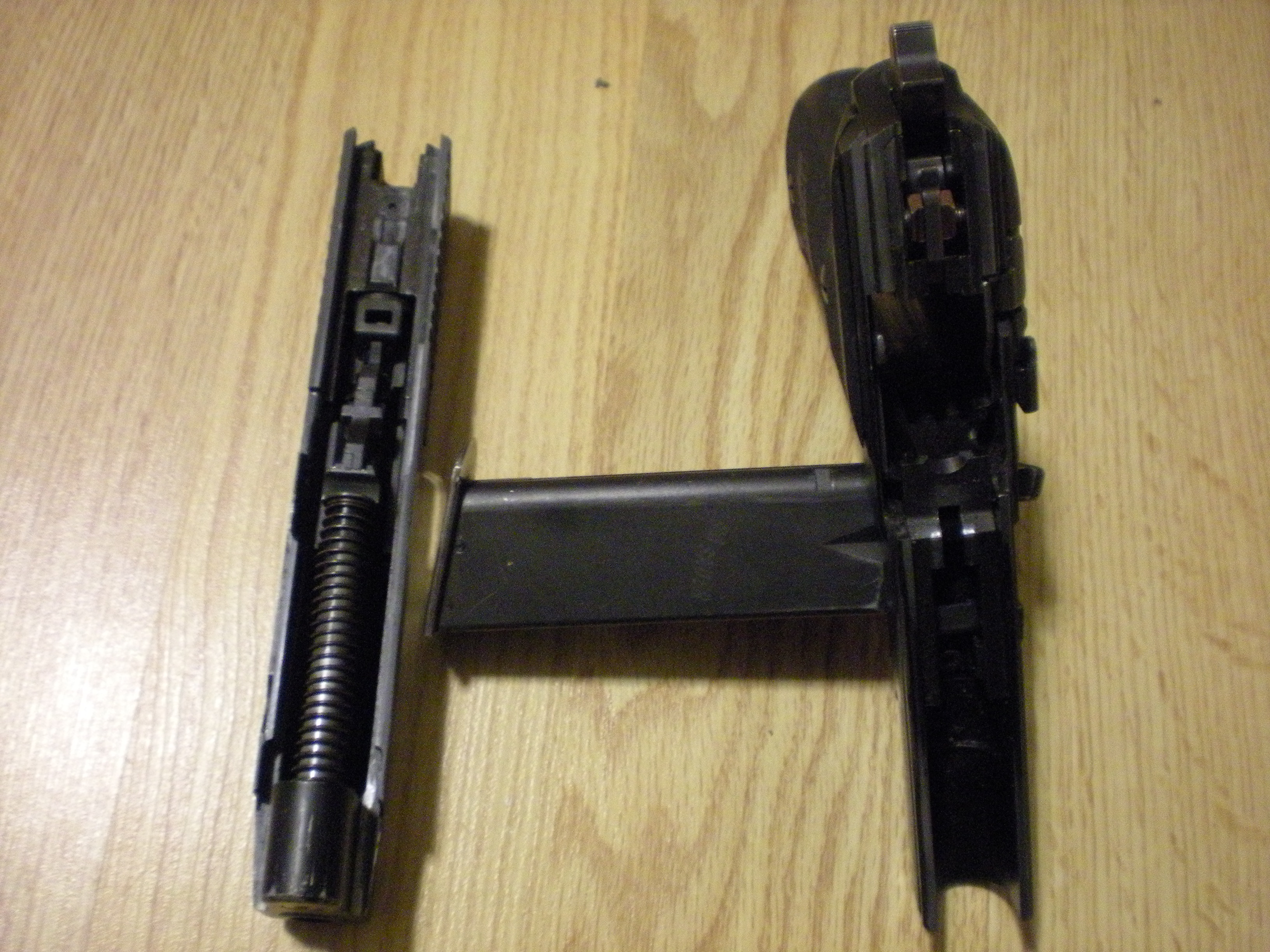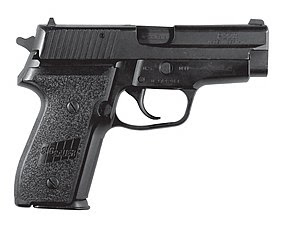| SIG Sauer P226 |
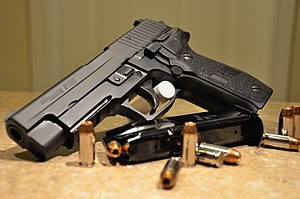 |
| Type |
Semi-automatic pistol |
| Place of origin |
Germany |
| Service history |
| Used by |
See Users |
| Production history |
| Designed |
1980-1983 |
| Manufacturer |
SIG Sauer |
| Produced |
1983-present |
| Variants |
See Variants |
| Specifications |
| Weight |
964 g (34.0 oz) (w/ magazine)[1] |
| Length |
196 mm (7.7 in)[2] |
| Barrel length |
112 mm (4.4 in)[2] |
| Width |
38.1 mm (1.50 in)[1] |
| Height |
140 mm (5.5 in)[1] |
|
| Cartridge |
9×19mm Parabellum, .40 S&W, .357 SIG, .22 Long Rifle (Classic 22 model only) |
| Action |
Mechanically locked, recoil operated(DA/SA or DAO) |
| Feed system |
10-, 12-, 13-, or 15-round magazine(.40 S&W, .357 SIG);
10-, 15-, 17-, 18-, or 20-round magazine (9×19mm Parabellum);
10-round polymer magazine (Classic 22 only) |
| Sights |
Iron sights |
The SIG Sauer P226 is a full-sized, service-type pistol made by SIG Sauer. It is chambered for the 9×19mm Parabellum, .40 S&W, .357 SIG, and .22 Long Rifle. It is essentially the same basic design of the SIG Sauer P220, but developed to use higher capacity, double stack magazines in place of the single stack magazines of the P220. The P226 itself has spawned further sub-variants; the P228 and P229 are both compact versions of the double stack P226 design. The SIG Sauer P226 and its variants are in service with numerous law enforcement and military organizations worldwide.[3]
History[edit]
Schweizerische Industrie Gesellschaft (SIG) is a Swiss company, now known as Swiss Arms. In 1975, SIG entered into an agreement with German gun manufacturer J.P. Sauer & Sohn to develop and market a new handgun which became the P220. The P220 was the first SIG Sauer handgun sold in the USA. It was marketed initially by Browning as the Browning BDA. The SIG Sauer P220 is a refinement of the Petter-Browning design used in the SIG P210. The locked breech design is very different and was pioneered by SIG Sauer. See also The first SIG Sauer Handgun.
The P226 was designed for entry into the XM9 Service Pistol Trials (see also Joint Service Small Arms Program) that were held by the US Army in 1984 on behalf of the US armed forces to find a replacement for the M1911A1 and 24 other makes of handgun in US military service. Only the Beretta 92SBF and the SIG P226 satisfactorily completed the trials.[4]According to a GAO report, Beretta was awarded the M9 contract for the 92F due to a lower total package price. The P226 cost less per pistol than the 92F, but SIG’s package price with magazines and spare parts was higher than Beretta’s. The Navy SEALs, however, later chose to adopt the P226 as the P226 MK25 with special corrosion protection.[5]
For the U.S. military XM9 trials, the P226 was imported by Saco Defense. Interarms took over importing when the pistol was introduced for civilian sales. SIG Sauer eventually founded SIGARMS, Inc. (Now SIG Sauer in the United States to handle importation of their products. In 2000, SIG Holding AG sold J.P. Sauer & Sohn GmbH to two German businessmen.[6] The brand name SIG Sauer remained at J.P. Sauer & Sohn GmbH.
Design details[edit]
The P226, like the other members of the SIG Classic family, operates by the locked breech short-recoil method pioneered by John Browning. On firing, the slide and barrel are locked together for a few millimetres of rearward movement, after which the barrel is cammed down at the rear. By this time the bullet has left the barrel and the pressure has dropped to safe levels, whereupon the slide completes the rearward stroke, ejecting the spent cartridge. The recoil spring then propels the slide forward, stripping a round from the magazine and in the last few millimetres of forward movement the barrel is cammed upwards, locking the slide and barrel together again.

A SIG Sauer P 226 S Sport Stock, an all stainless steel variant, with heavy barrel and adjustable LPA match sights.
Instead of the locking lugs and recesses milled into the barrel and slide of other Browning-type firearms (such as the Colt M1911A1, Browning Hi-Power and CZ 75), the P226 locks the barrel and slide together using an enlarged breech section of the barrel locking into the ejection port. This modified system, which was devised by SIG based on Charles Petter‘s Modèle 1935A pistol and their own SIG P210, has no functional disadvantages compared to the original system, and has since been copied by numerous firearm manufacturers.
The slide of the pre-1996 P226 was a heavy gauge, mill finished sheet metal stamping with a welded on nose section incorporating an internal barrel bushing. The breech block portion was a machined insert attached to the slide by means of brazing and a roll pin visible from either side. Since 1996, production has shifted to CNC machining and the slide is now milled from a single piece of stainless steel. Therefore, the current standard P226 has a Nitron coated, stainless steel slide. This resulted in a stronger slide, which was necessary to chamber the more powerful .40 S&W and .357 SIG cartridges.[citation needed] The frame of most models is made from hard anodized aluminumalloy.

Original West German model SIG-Sauer P226
The standard SIG P226 incorporates a decocking lever on the left side of the frame above the magazine release button, which first appeared on the Sauer 38Hprior to World War II, which allows the hammer to be dropped safely. In chambering or firing a round, the actuation of the slide automatically cocks the hammer. By using the decocking lever, the hammer can be de-cocked without actuating the firing pin block, making it impossible to accidentally fire the firearm by using the decocking lever. Furthermore, using the decocking lever makes the firearm “drop safe“, which means the firing pin will be blocked from striking a loaded round unless the trigger is pulled. Pulling the trigger and slowly lowering the hammer does not make the firearm “drop safe”, and can result in an accidental discharge if sufficient force is applied to the hammer.
Properly decocked, the pistol can be holstered safely and can be fired in double action mode by simply pulling the trigger. The SIG P226 has no manual safety. Double action trigger pressure is approximately 44 N (9.9 lbf). Subsequent shots are fired in single action mode with a lighter trigger pressure of approximately 20 N (4.5 lbf). As with other DA/SA pistols such as the HK USP and Beretta 92F, some training is required to minimize the difference in point of aim caused by the different trigger pressure between a first double action shot and subsequent single action shots. The hammer may also be manually cocked at any time by the user to fire in single action mode.
Manufacture[edit]
SIG Sauer firearms are manufactured in Switzerland, in Eckernförde, Germany by J.P. Sauer & Sohn, and in Exeter, New Hampshire, United States by SIG Sauer Inc., formerly SIGARMS Inc.
Copies of the P226 are produced in China by Norinco, under the name of NP226. Other unlicenced copies include the MA-6 in Myanmar and ZOAF in Iran, both are standard-issue pistols of their armed forces.
Variants[edit]
P226 Rail[edit]
The P226 Rail (or P226R) is the same as a P226, but it has a rail on the underside of the frame, just forward of the trigger guard. The P226R’s rail has a more rounded contour than the military standard M1913 Picatinny rail and while most Picatinny-rail accessories will fit, not all will. This has now become the standard P226.[1]
P226 Tactical[edit]
A P226R with an extended 127 mm (5.0 in) barrel and external threads to accept a suppressor (the standard P226 barrel length is 112mm (4.4 in)). It was also equipped with SIGLITE Night Sights, 1 extended 20rd. magazine and 2 standard 15rd. magazines.
P226 Tactical Operations (TacOps)[edit]
Essentially a P226 Elite with extended Magwell grips and a Nitron coated stainless steel slide. The Elite beavertail frame is used (with standard accessory rail), and the slide features front cocking serrations. Like the Elite, SRT is standard. Magazine capacity is 20 rounds in 9mm, and 15 rounds in .40S&W and .357 SIG. The firearm comes with SigLite rear combat night sights and a TruGlo tritium fiber-optic front sight. The firearm ships with 4 magazines. An extended, threaded barrel is optional.
P226 Navy[edit]
U.S. Navy SEAL teams started using the SIG P226 in the 1980s, after German Kampfschwimmer tested them successfully.
The first Naval Special Warfare inspired P226 pistols to be offered to the public were the NSW Commemoratives, issued in early 2004. The SIG P226-9-NAVY is a version of the SIG P226 produced that features a stainless steel slide engraved with an anchor to designate them as Naval Special Warfare pistols. SIGARMS raised $100,000 for the Special Operations Warrior Foundation through the sale of these NSW serialized pistols. The pistol with the serial number NSW0001 was sold during a live auction on the US-wide syndicated Laura Ingraham radio show for an additional $25,000. Later produced commercial versions added a universal rail for accessory attachments while retaining the anchor of previous models, but do not have the SIGLITE Night Sights.[7]

A P226 Mk25 model featuring the UID barcode, Silver Anchor and a Surefire X300 Ultra weapon light mounted on the Picatinny rail.
P226 MK25[edit]
Released in 2011, the MK25 has been advertised by SIG as being identical to firearm carried by the U.S. Navy SEALs. Features that help identify it amongst other P226 variants include the silver anchor and UID identification label on the left side of the pistol, as well as a mil-spec picatinny rail. Although cosmetically similar to the Navy model, the MK25 features an anti-corrosion coating applied to all external and internal surfaces, as well as SIGLITE Night Sights.[8]
P226 Blackwater[edit]
Introduced in 2007, the SIG P226 Blackwater was designed in cooperation with the Blackwater Training Center. It featured SIGLITE front and rear night sights, the Blackwater USA logo on the slide and wood grips, an integral Picatinny rail, black anodized frame, and Nitron-coated stainless steel slide. It was available only in 9×19mm Parabellum, with a double-action/single-action (DA/SA) trigger. The gun was sold with five 15-round 9mm magazines. The P226 Blackwater was discontinued in 2009 with the release of the P226 Blackwater Tactical[9] – a nearly identical pistol also with 20-round 9mm magazines.[10] The Blackwater Tactical has since been discontinued, having been replaced by the Tactical Operations. It is essentially the same firearm, but lacks Blackwater markings.
P226 SCT[edit]
The P226 SCT (Super Capacity Tactical) is an all black, Nitron finished P226 featuring front cocking serrations, accessory rail, a SIGLITE rear night sight, a TRUGLO Tritium Fiber Optic front sight and comes with four newly designed 20-round magazines for the 9mm version or four 15-round magazines for the .40 S&W version.
P226 Equinox[edit]
The P226 Equinox comes chambered in .40 S&W and features a two-tone accented design. The design is achieved by the brush polished flats of the slide and nickel accents of the gun’s controls. The P226 Equinox comes with a TRUGLO Tritium Fiber Optic front sight, rear SIGLITE night sights, SIG accessory rail, and gray laminated wood grips.
P226 ST[edit]
The SIG Sauer P226 ST was a limited production all-stainless version of the SIG P226 pistol. It is heavier than a standard P226 because the frame was made of stainless steel instead of aluminum. Weight with the magazine was a hefty 1,196 g (42.2 oz) vs 964 g (34.0 oz) of the standard aluminum-framed version. The added weight of an all-stainless frame is claimed to provide greater recoil reduction and a quicker return to target between shots making it a common choice among Practical Shooting competitors. The P226 Stainless had a blued barrel and featured an M1913 Picatinny rail. These frames were made in Germany. Prototypes were tested in 2004 and it went into production in very limited numbers. The P226 ST is no longer manufactured.
P226 S Sport Stock[edit]
The P226 Sport Stock was produced in Germany in 2002 and 2004 in limited numbers, all stainless construction with a strengthened frame dust cover, 4.4 inch stainless bull barrel, extended controls, and comes originally with Hogues grips and LPA target sights, these are often referred as the SIG Mastershop predecessors to the X-family.
P226R HSP[edit]
On sale in September 2005, SIG Sauer Homeland Security Pistols (HSP) are the same models SIG builds for the United States Department of Homeland Security. This is a limited production run of 1,000 P226R HSP pistols available engraved with the American flag and Homeland Security X of 1000. Additionally, each pistol comes in .40 S&W caliber and is engraved with serial number barcoding just like those which were shipped to DHS. The HSP also features the new DAK trigger, a stainless steel Nitron slide topped with SIGLITE night sights, and a light weight alloy frame with rail.
There is also a P229R HSP model available with the same features.
P226 X-Five[edit]
The SIG Sauer P226 X-Five is a competition only variant of the P226 with a 127 mm (5.0 in) slide and barrel, beavertail grip, and an adjustable rear target sight. Intended for IPSC Wa1500, bullseye and other centrefire competitive shooting, the X-Five is hand-fitted and assembled in Germany, and its resulting accuracy accordingly rivals the SIG P210. Available in 9mm or .40 S&W, there are five models being offered in the United States:
- The “Competition” model has a single-action-only (SA) trigger, ambidextrous thumb safety, flared magazine well, and high-capacity magazines (19-round 9mm/ 14-round .40 S&W).
- The “Level-1” model adds a special adjustable SA trigger and Nill wood grips.
- The “Lightweight” model is similar to the “Level-1” but with an alloy rather than stainless frame. (US models only chambered for 9mm.)
- The “Allround” model has a double-action/single-action (DA/SA) trigger, a decocking lever and a standard magazine well designed to accommodate P226 magazines.
- The “Tactical” model comes with a black Ilaflon finish, and features a heavy-weight alloy frame with a SIG rail, and fixed contrast or tritium night sights. Available in single action only (SAO) configuration. The X-Five Tactical model is available only in 9mm.[11]
- The “Norway” is a very limited edition model that was created for the Norwegian Special Forces and comes completely made of stainless steel with a PVD coating. There were approximately sixteen of these imported to the U.S. making them extremely scarce.
All SIG P226 X-Five models include a factory test target with a sub-50 mm (2.0 in) 5-shot grouping from 25 m (27 yd).
P226 X-Six[edit]
The SIG P226 X-Six is designed, manufactured, and marketed as a precision pistol under SIG’s sporting firearm line. The X-Six features an extended slide and frame to accommodate a 152 mm (6.0 in) barrel, an ambidextrous manual safety and a trigger adjustable for pull weight, distance and stop. To further enhance the X-Six’s sporting pedigree the pistol features a standard low profile adjustable sights, grip grooves cut into the front of the frame, lightweight magazine extension and NILL sporting grip plates.
- The P226 X-Six is also offered with an aluminum frame. This model, designated the P226 X-Six AL is identical to its steel frame counterpart in every way yet weighs in at only 1,070 g (38 oz).
X-Series[edit]
The X-Series was launched in 2013. It is a redesign and expansion of SIG Sauer competitive models, consisting of the brand new X-Short (Barrel lengths comparable to the standard P226) and updated versions of both the X-Five and the X-Six. All three barrel lengths are available in Classic, Match and Supermatch configurations. In addition, there are a number of specialized models available that feature only one or two of the barrel lengths. The line features great interchangeability of parts, along with a wide array of accessories. For instance, sights can be replaced quickly by undoing a screw and some clips.
- The “Classic”[12] model most closely resembles the X-Five and X-Six of old. The models feature walnut grip plates, short magazine release, completely adjustable SAO trigger system and micrometer sights.
- The “Match”[13] model is a sporting model featuring black laminated wood grip plates, extended magazine catch, skeletonized hammer, fully skeletonized SAO trigger and adjustable micrometer sights.
- The “Supermatch”[14] model is their premier competition model. It features G10 grips, sport-magazine catch, skeletonized hammer, fully adjustable SAO straight match trigger and a sporting disassembly lever.
- The “Allround”[15] most closely resembles the P226 the range is built on. It is an X-Five with a DA/SA trigger assembly, and has the normal SIG Sauer decocker and internal safeties. The pistol is, amongst other things, intended for the IPSC Production division.[16]
- The “SO Series”[17] is a model intended for service pistol competitions. It comes in two variants where the difference is the frame material. The SO has a steel frame, while the AL SO SAO has an aluminium frame. Both versions feature fixed sights (on an adaptor plate), a non-adjustable SAO trigger, short magazine catch and polymer grip plates.
- The “X-Press”[18] model is a base-model X-Five, ready to accept the upgrades the user wants.
Additionally, the SIG Sauer mastershop has three Supermatch-based models available for more specialized competitions.[19] The X-Five Open is intended for the IPSC Open division, while the X-Six PPC and X-Six PPC Open are intended for PPC 1500 competitions.
P226 Elite[edit]

A SIG Sauer P226 Elite Dark with attached Streamlight TLR-1s weapon light. Note the extended beavertail.
The P226 Elite adds an ergonomic extended beavertail, forward cocking serrations, front strap checkering, custom wood grips, adjustable combat night sights, and the Short Reset Trigger (SRT). SIG engineers designed the SRT to provide the same safety and action of the SIG DA/SA trigger with a reset that is 60% shorter for faster trigger return during high speed shooting. The Elite Dark is equipped with alloy grips produced by Hogue instead of wood. The Platinum Elite also has aluminum grips. The P226 Elite line is available in 9mm, .357 SIG, and .40 S&W.
P226 Combat[edit]
Like the P220 Combat before it, the two models, P226 Combat and P226 Combat TB (Threaded Barrel), are available in DA/SA. Their frames are “Flat Dark Earth” in compliance with the Combat Pistol program. The Combat model comes with night sights, a Nitron-finished slide and barrel, fore slide serrations, desert tan polymer grips and a military standard M1913 Picatinny rail as well as phosphate coated internals. The TB model features an extra 15 mm (0.59 in) on the barrel, and external threads to accept a suppressor.
P226 E2[edit]

SIG Sauer P226 E2. Note magazine capacity in this picture is capped at 10 rounds.
Introduced at the 2010 SHOT Show, the P226 E2 at the time was a significant update to the P226 line. ‘E2’ (pronounced ‘E-squared’), or otherwise known as “Enhanced Ergonomics”, is SIG Sauer’s attempt to make the large frame gun more ergonomic for persons with small and medium-sized hands. A reduced grip size and reduced reach trigger bring the trigger face back more than 13 mm (0.5 in), thus potentially allowing better trigger manipulation and control for a greater number of shooters. Other standard features include the Short Reset Trigger, aggressive grip finish texture, and a new wrap-around, one-piece grip panel configuration.[20] The gun was discontinued from the P226 model lineup at the end of 2010 but the E2-style grip system has been adopted on and carried over to other P226 variants.
P226/P229 Classic 22[edit]
This .22LR model’s primary purpose is as practice or range pistols. The Classic 22 has an aluminum slide with a nitron finish (instead of the centerfire stainless steel slide) and a barrel chambered in .22LR. The Classic 22 slide assembly is complete with a lighter recoil spring and plastic guide rod. It also incorporates the same frame and operation as center fire P226 models. The Classic 22 model is available as a stand-alone firearm or as a conversion kit to an existing center fire P226 or P229. Likewise, conversion kits (the SIG Sauer X-Change Kits) exist to convert a .22LR into 9mm, .40 S&W or .357 SIG.[21][22] The conversion can be accomplished by field stripping the firearm and replacing the slide assembly and magazine – a process that can be accomplished in seconds.
The Classic 22 use a 10-round polymer magazine in lieu of the steel magazines used by the centre fire models and conversion kits.
The P226 Classic 22 should not be confused with the SIG Sauer Mosquito .22LR pistol. The Classic 22 is a full-sized P226 while the Mosquito is modelled on the P226 but is 90% of the size. Also the Classic 22 is manufactured by SIG Sauer while the Mosquito is made under licence by German Sport Guns GmbH.
P226 LDC[edit]
In 2014 SIG Sauer sports division in Germany introduced the P226 LDC Version. This version is made for shooting sports and features a longer dust cover and 1913 rail. It also features the E2 grip and the SRT Short reset trigger system, HiViz front sight, adjustable rear sight and skeletonized hammer. The magazine takes 17 rounds.
P226 Legion[edit]

Stock P226 Legion, showing medallion grips
In 2015, SIG Sauer announced the Legion Series of firearms, including the P226 Legion (available in 9mm, .357 SIG, and .40 S&W)[23] and P226 SAO Legion (available in 9mm).[24] The P226 Legion included a number of modifications from the original West German P226, including upgraded sights, reduced decocker and slide release, grey PVD coating, custom grips, reduced beavertail, solid steel guide rod, and custom trigger.[25]
P228 (M11)[edit]

US Navy Explosive Ordnance Disposal range practice
A compact version of the P226, the P228, is in use with various law enforcement agencies and also with the US military, where it is designated as the M11. The P228 has a shorter slide and barrel than the P226. Unlike the P226, the P228 is available only in 9×19mm Parabellum with a 13-round magazine, but can also use P226 15- or 20-round magazines. Aftermarket magazines extend the capacity of the P228 to 15 rounds.
From a distance, the P228 can be differentiated from the P226 by comparing the trigger guards (the P228’s is curved, while the P226’s is slightly hooked) and the barrel and slide lengths (the P228’s barrel 99 mm (3.9 in), thus having a corresponding shorter slide). Also in a side-by-side comparison the P228 would appear slightly shorter (15 mm (0.59 in) shorter) than the P226. The larger capacity P226 magazine can also be employed in the P228 although it extends from the base of the grip. Civilian sales of the P228 were discontinued with the introduction of 9mm chambering in the P229 but were recently reintroduced in limited quantities to civilians with an accessory rail and designated P228R.
The P229 is nearly identical to the P228, however its slide is made from milled stainless steel (versus the P228’s forged carbon steelslide) and is available in 9mm, .40 S&W, and .357 SIG. In the summer of 2012, SIG Sauer announced they were releasing the M11A1, which is essentially the milled-slide P229 chambered in 9mm with P228-labeled grips, a short reset trigger, SIGLITE tritium night sights, Mec-Gar 15-round magazines, and a military style smart tag and serial number. Later in 2012, Air Force M11b versions of the P228 were released for civilian sale. The M11 is to be replaced in the Army and Air Force through the Modular Handgun Systemprogram.[28] On January 19, 2017, it was announced that the SIG Sauer P320 Compact (M18) had been selected to replace the M11 as the U.S’s service pistol. One factor in winning the Modular Handgun System competition was the ability to employ 9mm Parabellum, .357 Sig or .40 S&W cartridges within the same basic frame.

SIG Sauer P229R—”R” denotes the accessory rail
The P229 is a compact firearm often used for duty or concealed carry purposes. The standard version features a DA/SA trigger. The pistol has also been made available in a DAK (Double Action Kellermann) model, which is a DAO system with two trigger reset points, and a lighter, smoother pull than that of traditional DAO handguns. Most of the above-mentioned factory variants of the P226 are also available for the P229, including the Equinox option, Elite lineup, as well as a SAS GEN 2 model.
The P229 differs from its cousin the P226 in several respects, and was originally introduced to supplement and then replace the P228 by adding the .357 SIG and .40 S&W as available chamberings. The P229 was the first production handgun introduced that could chamber the .357 SIG round.[29] The P226 and P228 were originally manufactured using a stamped-steel slide on an aluminum alloy frame. The P229 consists of a CNC-milled stainless steel slide, typically colored black with a Nitron finish. The P229’s milled steel slide was introduced to handle the higher slide velocities created by the .357 SIG and .40 S&W loads, which the stamped slide of the P228 could not handle without the use of a much stiffer recoil spring. This would have made manual slide-retraction much more difficult and the use of a milled stainless slide (coupled with the new milling and stainless production capabilities found in the U.S. factory) with a standard weight recoil spring made more sense.
A standard weight recoil spring for the P229 is 71 N (16 lbf). A spring weight of 89 N (20 lbf) or higher would have been required if a stamped slide was used for the .40 S&W or .357 SIG chamberings. The SAAMI maximum chamber pressures of 9mm, 9mm +P, .40 S&W, and .357 SIG are as follows: 240 MPa (35,000 psi); 265 MPa (38,500 psi); 240 MPa (35,000 psi); and 280 MPa (40,000 psi). The slide on the P226 was redesigned in a similar fashion, and civilian sales of the P228 were discontinued in early 2005 due to declining sales and the advent of the P229 in 9mm. The P226 and P229 are both available with optional accessory rails and optional forged stainless steel frames.
The P229 can be chambered in .22 LR, 9mm, .40 S&W or .357 SIG. Changing between .40 S&W and .357 SIG is as simple as switching out the barrel; both calibers use the same magazine. Conversion barrels also allow a P229 or P226 to change between a .40 S&W/.357 SIG to a 9mm caliber. The 9mm model (both railed and non-railed) can be converted to .22 LR, but in the past its receivers were not designed to provide the space needed for handling the larger rounds of .357 SIG and .40 S&W. As SIG Sauer has slowly begun adopting the E2-style grip system across the P229 model range in 2011—a move similar to what is also happening to the larger P226—they have also begun using the .357 SIG/.40 S&W spec frame dimensions for their factory 9mm P229s, presumably to streamline the number of variations in parts needed to be kept in inventory. Although the manufacturer has announced that older-configuration magazines will continue to operate in the new receiver configuration, SIG Sauer has nonetheless revised new P229 9mm factory magazines to a design that is specific to the resized magazine well of the newly reconfigured receiver/frame. As a consequence, the newer magazines are not back-compatible, due to their larger width.
DAK Version[edit]

SIG Sauer P229R DAK showing the accessory rail, recessed hammer, and lack of a de-cocker as compared to the regular P229.
SIG released an altered version of the double-action only (DAO) pistols called the DAK (for Double Action Kellermann, after the designer of the trigger system, Harald Kellermann of Eckernförde, Germany).[30] The DAK capability is available in 220, 226, 229 and 239 models. When firing the pistol the first trigger pull is 29 N (6.5 lbf) (compared to 44 N (10 lbf) for the standard DAO). After the pistol fires and the trigger is released forward, the trigger has an intermediate reset point that is approximately halfway to the rest position. The trigger pull from this intermediate reset point is 38 N (8.5 lbf). If the trigger is released all the way forward, this will engage the primary trigger reset and have a trigger pull of 29 N (6.5 lbf). To engage the intermediate reset, the trigger must be held to the rear while the slide is cycled, either manually or by the recoil of a round being fired. The pistol can be cocked by pulling the trigger just past the trigger reset, then stopping, then releasing.
The United States Coast Guard began switching over to the SIG P229R-DAK in .40 S&W in 2004, beginning with the first shipment of 14,000 handguns from the production facility. According to producer site more than 3 million rounds were fired during U.S. Government testing.[31] The “R” denotes the accessory rail ahead of the trigger guard.
The P224 is a subcompact variant of the compact P229. When the new design was announced in January 2012, the line was chambered only in .357 SIG and .40 S&W, and came only with a DAK (Double Action Kellermann) trigger. SIG announced that they would expand the line to include a DA/SA (Double Action/Single Action) trigger, a SRT DA/SA (Short Reset Double/Single Action) and would add a 9mm version in the future. As of 2013, the P224 was available in the original two calibers and the DAK trigger with four factory variants; SIG Anti-Snag (SAS), Nickel, Extreme and Equinox.[32] The pistol has since been discontinued.
The P224 is 170 mm (6.7 in) long, compared to 180 mm (7.1 in) for the P229. It is also about 23 mm (.9 in) shorter at 110 mm (4.5 in) and 5.1 mm (.2 in) thinner at 33 mm (1.3 in) than the P229. It weighs 190 g (6.6 oz) less than the alloy frame P229 and 420 g (14.8 oz) less than the stainless steel frame p229. The standard P224 magazine capacity is 10 rounds .357 SIG/.40 S&W and 12 rounds in 9mm.[33] It will also accept newer P229 magazines, which have a higher capacity.
| Country |
Organization Name |
Model |
Reference |
 Bangladesh Bangladesh |
Bangladesh Navy SWADS |
P226, P228, P229 |
[34] |
| Special Security Force (SSF) of the Bangladesh Army |
P226, P228, P229 |
[34] |
 Belarus Belarus |
KGB Alpha Group |
P226 |
[35] |
 Canada Canada |
Canadian Armed Forces |
P226, P229 |
[3] |
| Fredericton Police |
P226 |
|
| Royal Canadian Mounted Police (Emergency Response Team) |
P226 |
[36] |
| Parliamentary Protective Service |
P226DAK |
|
| Ontario Provincial Police, First Nations Police Services |
P229 |
[37] |
| Royal Newfoundland Constabulary |
P226 |
[38] |
| Lethbridge Police Service |
P226 |
|
| Vancouver Police Department |
P226 |
[39] |
 Egypt Egypt |
Unit 777 |
P226 |
[3] |
 Finland Finland |
Finnish Army |
P226 |
[3] |
 France France |
National Gendarmerie Intervention Group (GIGN), The Tactical Squad of French Gendarmerie |
P226, P228 |
[40] |
| Escouade de contre-terrorisme et de libération d’otages (ECTLO), counter-terrorist and hostages rescue squad of French Navy |
P226 |
[41] |
 Georgia Georgia |
Used by police and special forces |
P226 |
[citation needed] |
 Germany Germany |
Spezialeinsatzkommandos (SEKs) of the police, and the Federal Criminal Police Office |
P226, P229 |
[42] |
 Greece Greece |
EKAM counter-terrorist unit of the Hellenic Police |
P229 |
[43][44] |
 India India |
Indian Army |
P226 |
[3] |
 Indonesia Indonesia |
Komando Pasukan Khusus (Kopassus) special forces group of the Indonesian Army |
P226, P228 |
[45] |
| Komando Pasukan Katak (Kopaska) tactical diver group of the Indonesian Navy |
P226, P228 |
[45] |
 Iran Iran |
Defense Industries Organization |
P226 |
[46] |
 Ireland Ireland |
Defence Forces Army Ranger Wing |
P226, P228 |
[47] |
| Garda; SDU, ERU, RSU, NBCI, Drugs and Organised Crime Bureau |
P226 |
[48][49] |
 Israel Israel |
Israeli Special Forces Units |
P226, P228 |
[50] |
 Japan Japan |
Special Boarding Unit |
P226R |
[51] |
 Republic of Korea Republic of Korea |
Republic of Korea Naval Special Warfare Flotilla |
P226N |
[52] |
 Luxembourg Luxembourg |
Unité Spéciale de la Police of the Grand Ducal Police |
P226, P228 |
[53][54][55] |
 Malaysia Malaysia |
Royal Malaysia Police |
P226, P228 |
|
| 10 Paratrooper Brigade |
P226 |
[56] |
| Grup Gerak Khas |
P226 |
[56] |
| Special Task And Rescue |
P226-X Five |
|
 Myanmar Myanmar |
Myanmar Army |
P226 |
[citation needed] |
 Norway Norway |
Emergency Response Unit |
P226 |
|
 Netherlands Netherlands |
Unit Interventie Mariniers (UIM) of the Netherlands Marine Corps |
P226 |
[57] |
 New Zealand New Zealand |
New Zealand Defence Force |
P226, P226R designated P226AL |
[58] |
 Pakistan Pakistan |
Special Services Group |
P226, P229 |
[59] |
 Philippines Philippines |
Philippine Air Force |
P228 |
[60] |
 Poland Poland |
GROM special group |
P228 |
[61] |
 Portugal Portugal |
Portuguese Armed Forces |
P228 |
[62] |
 Singapore Singapore |
Singapore Armed Forces |
P226 |
[63] |
 Spain Spain |
Grupo Especial de Operaciones (GEO) of the Cuerpo Nacional de Policía |
P226 |
[64] |
 Sweden Sweden |
Swedish Police Authority |
P226, P228, P229 |
[65] |
 Switzerland Switzerland |
Variant polices service and Swiss army Pistolet 03 (2003) |
P226, P228 |
|
 Turkey Turkey |
Special Forces |
P229 |
[3] |
| Underwater Offence Group Command |
P226, P229 |
[66] |
 United Arab Emirates United Arab Emirates |
United Arab Emirates Army |
P228 |
[3] |
| Various special forces |
P228 |
[3] |
 United Kingdom United Kingdom |
British Army (standard P226 designated L105A1 and improved version with corrosion resistant finish designated L106A1, P229 designated L117A2) |
P226, P229 |
[3] |
| Special Air Service |
P226, P228 designated L107A1 |
[3] |
| Ministry of Defence Police |
P229 |
[citation needed] |
| West Midlands Police |
P229 |
[citation needed] |
 United States United States |
United States Army |
P228 (designated M11) |
[67] |
| United States Army Criminal Investigation Command |
P229 |
[68] |
| United States Air Force Office of Special Investigations |
|
|
| United States Coast Guard |
P229R DAK .40 S&W |
[68] |
| United States Department of Homeland Security |
P229 DAK .40 S&W |
[68] |
| U.S. Diplomatic Security Service (U.S. Department of State) |
P226R, P228, P229, P229R (9×19mm) |
[69] |
| U.S. Federal Air Marshals |
P229 (.357 SIG) |
[70] |
| Naval Criminal Investigative Service |
P228, P229 |
[71] |
| United States Navy SEALs |
P226 (designated MK25), P229 (9×19mm) |
[72] |
| United States Navy |
P226R (9×19mm)& P228 (designated M11) (9×19mm) |
[73] |
| United States Department of Veterans Affairs Police |
P229R DAK (9×19mm) |
[74] |
| US Secret Service |
P229R (.357 SIG) |
[75] |
| United States Postal Inspection Service |
P229R DAK (.40 S&W) |
[76] |
| Texas Ranger Division |
P226 (.357 SIG) |
[77] |
| New York City Police Department |
P226 DAK (9×19mm) |
[78] |
| Delaware State Police |
P226, P229 (.357 SIG) |
[79] |
| Ohio State Highway Patrol |
P226 .40 S&W |
[80] |
| Orlando Police Department |
P226R (9×19mm) |
[81] |
| Anne Arundel County Police Department |
P229R DA/SA (.40 S&W) |
[82] |
| Memphis Police Department |
P229 DAK |
[83] |
| Shelby County Sheriff’s Office |
P226, P229 DAK (.40 S&W) |
[84] |
| Connecticut State Police |
P229 (.40 S&W) |
[85] |
| Dallas Police Department |
P226 DAK (9×19mm or .357 SIG) |
|
| Ferguson, Missouri Police Department |
P229 .40 S&W |
[86] |
| University of California Police Department (UCLA) |
P226R (.40 S&W) |
[citation needed] |
| New Jersey State Police |
P228R (9×19mm) |
[87] |
| New Jersey Transit Police |
P229R .40 S&W |
|
| Houston Police Department |
P229R, P226 .40 S&W |
[88] |
| Sacramento Police Department |
P226R, P229R, P239 |
[89] |
| San Francisco Police Department |
P226, P229R .40 S&W |
[90] |
| Tampa Police Department Tactical Response Team (TRT/SWAT) |
P226R (9×19mm) |
[91] |
| Fairfax County Police Department |
P229R .40 S&W |
[80] |
| Jefferson County WV Sheriff’s Office |
P220R |
[citation needed] |
| North Carolina State Highway Patrol |
P226 (.357 SIG) |
|
See also[edit]

